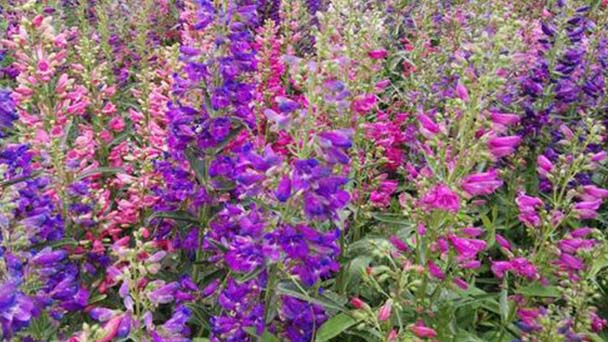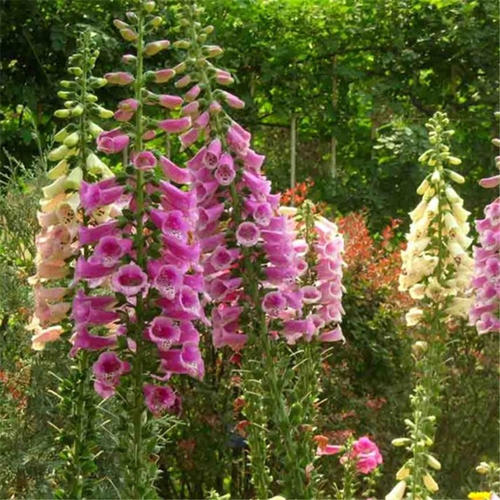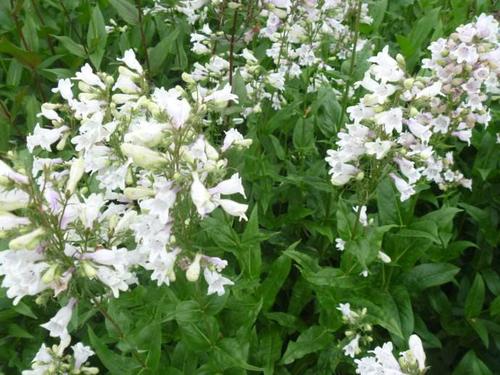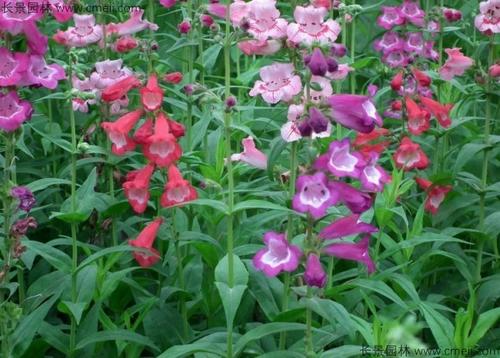Bellflower Beardtongue (Penstemon campanulatus) profile
Written by Maggie
Mar 08 2021

Bellflower Beardtongue, also called Penstemon campanulatus, Penstemon, is an ornamental plant native to Mexico and cultivated in China. Bellflower Beardtongue is like a warm, well-lit, ventilated environment. Avoid high temperature and drought in summer.
Bellflower Beardtongue picture

Morphological characteristics of the Bellflower Beardtongue
Bellflower Beardtongue is a perennial evergreen herb with a plant height of 15-45cm. Inflorescences are conical, campanulate, mixed color, stem smooth, slightly pinkish.Bellflower Beardtongue is tomentose, opposite leaves, basal leaves ovate, cauline leaves lanceolate. The flowers are solitary or 3 to 4 flowers in axils and racemes, irregular racemes, corolla tube about 2.5cm long, conical terminal growth, purple, rose red, purple or white flowers, with white stripes
Bellflower Beardtongue is a perennial herb, usually cultivated as an annual, 30-50 cm plant. Stem is smooth, slightly powdery. Leaves of Bellflower Beardtongue are opposite, basal leaves ovate, cauline leaves lanceolate, entirely. Cyme panicle is terminal, corolla tubular labial, flowers for red, blue, purple, pink and other colors. Branches of Bellflower Beardtongue are erect, fascicular strong, the base often lignified, opposite, narrow ovate ovate-lanceolate, leaf margin serrate. Inflorescence paniculates racemes. Florets campanulate labulate corolla, upper lip 2 lobed, lower lip 3 lobed, flowers slightly pendulous.
Bellflower Beardtongue is a perennial herb, cultivated as an annual, 50 cm tall, whole plant is tomentose. Caespitose, stem erect. Leaves are alternate, lanceolate. Flowers are single or 3 ~ 4 in leaf axils and pedicels on the composition of the top growth conical inflorescences, cone shaped, red, purple, white and other multicolor.
Ecological habits of the Bellflower Beardtongue
Bellflower Beardtongue likes a warm, well-lit, airy environment. Avoid high temperature and drought in summer. Bellflower Beardtongue likes a warm, well-lit, ventilated environment. Avoid high temperature and drought in summer. Bellflower Beardtongue is suitable for planting in flower beds, flower mirrors or green islands in landscaping.
Bellflower Beardtongue prefers a sunny, moist and well-ventilated environment. It is not cold resistant and avoids hot, dry and acidic soil. It must be a fertile sandy loam with good drainage and calcareous content. Bellflower Beardtongue is slightly tolerant of semi-shade, well drained soil is required.
Bellflower Beardtongue propagation
Seed propagation
Bellflower Beardtongue is usually planted in the autumn, after the seeds are harvested. Seedling tender, need to pay attention to keep the substrate moist, often sprinkle or soak the basin. Sow propagation is more prone to variation, so many good varieties are generally not used in this method.
Cutting propagation
The superior variety of Bellflower Beardtongue can be propagated by cutting in autumn and propagated by cutting in autumn. Select the shoots with strong growth and cut the cuttings about 10cm long. After disinfecting the cut site with carbendazim or clendendan, insert the cuttings into the sterilized sand slotting bed or basin.
Keep the humidity and proper shading, about 30 days can take root. Rooted plants can be planted on the basin. If planted in flower beds, it can be removed from the pot in 3 ~ 4 months after thawing in the following year.
Division propagation
Bellflower Beardtongue is mostly chosen in spring.In a few days after the new bud of the mother plant, dig up the mother plant soil lump or take off the pot, determine the new plant according to the bud, cut the new plant from the mother plant with a knife, and transplant directly. After transplanting, pouring water can quickly expand the root system and grow into considerable plants.

Disease control of the Bellflower Beardtongue
Symptoms: a large number of axillary buds and adventitious buds, internode shortening, yellow leaf becomes smaller, produce clear veins, winter twigs do not fall off in the shape of a bird's nest, the serious plant will die in the year, a few years later will die. The disease is severe in July and August every year.
Etiology: M10 is called mycoplasma. Mycoplasmids of 100 -- 670nm in size were observed in leaf vein sieve tubes of disinfected trees.
Disease condition: mainly rely on tea wing bug transmission of poison
Prevention and control methods:
(1) Ring peeling of disinfected branches in spring can prevent the transfer and diffusion of pathogens to other parts and achieve the prevention and control effect.
(2) spray tetracycline antibiotics 4000 times liquid at the early stage of disease.
The region of the Bellflower Beardtongue
Bellflower Beardtongue is native to Mexico and Guatemala.
Use of the Bellflower Beard Tongue
Ornamental value
Bellflower Beardtongue has a long flowering period and is suitable for flower planting. It can be configured with other blue perennial flowers to form a very bright color landscape. Bellflower Beardtongue also can be potted ornamental.
Landscape use of the Bellflower Beardtongue
Bellflower Beardtongue has a bright color and long flowering period, suitable for flower planting. It can form a very bright color landscape with other blue perennial root flowers. Bellflower Beardtongue also can be potted ornamental. There are about 250 species of plants in the same genus. Bellflower Beardtongue(P. barbatus) is the most commonly cultivated plant. Bellflower Beardtongue (P. Hirsutus), etc. Flowering spring and summer, available green flower border, but also cut flowers to appreciate.
Medicinal value
Bellflower Beardtongue is native to the U.S. state of Utah and Mexico, where it is considered an herb.

Latest Updated
- Benefits of Bugleweed - 7 Science-backed Health Benefits
- Bugleweed Dangers & Side Effects - Is It Poisonous?
- How to Plant Evergreen Trees - What You Should Know
- When to Plant Evergreens - Grow Guide for Evergreen Trees
- 12 Wonderful Evergreen Shrubs for Your Garden
- 12 Popular Evergreen Plants with Pictures for Beginners
- When And How To Prune A Lilac Bush Like a Pro
- How to Grow & Care for Lilac Vine (Hardenbergia Violacea)
- Japanese Lilac Tree (Syringa Reticulata) Care & Propagation Guide
- Shumard Oak Pros and Cons - What to Know
Popular Articles
- Winter maintenance of Antirrhinum Majus
- How to Grow Terminalia Mantaly Tree
- How to Grow and Care for Crossostephium Chinense
- How to grow Antirrhinum Majus in spring
- Peristeria Elata (Dove Orchid) Profile: Info & Care Guide
- Underwatered Snake Plant (Sansevieria Trifasciata) - Signs And How To Fix
- How to Care for Brazilian Jasmine Plant (Mandevilla Sanderi)
- How to Grow & Care for Graptopetalum Purple Delight in Summer
- Rosa Chinensis (China Rose): Plant Growing & Care Tips
- How to Care for Baby Sun Rose (Aptenia Cordifolia)